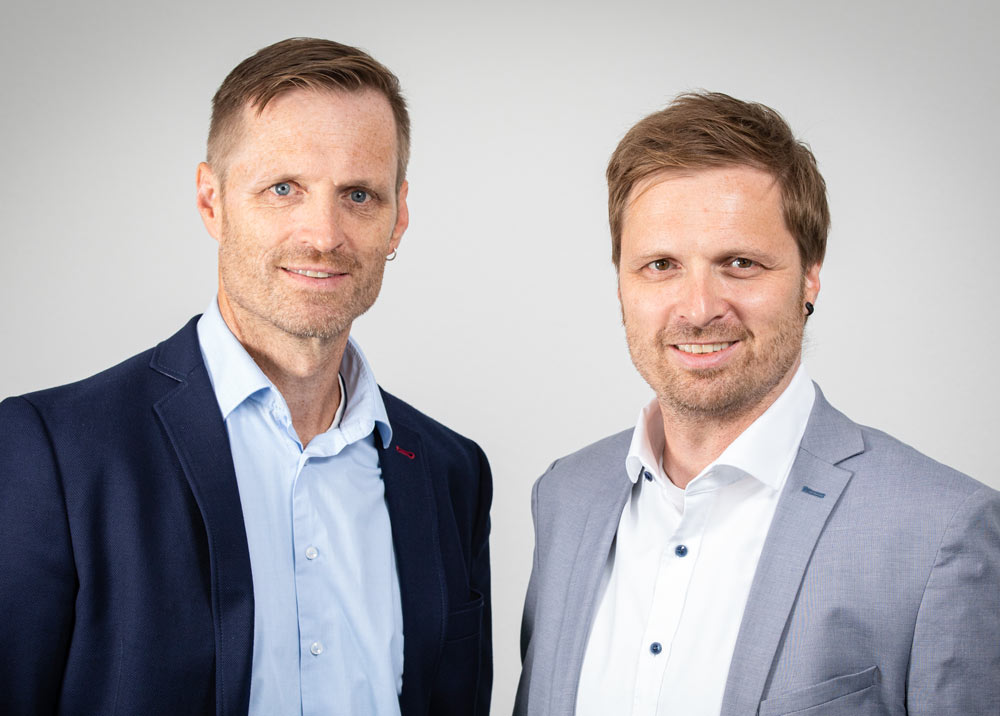
Let´s talk.
Do you have any questions or ideas that we can help you realise? This is how you can reach us:
Phone: +49 421 557 166 E-mail: contact@macpanther.de
Extrusion is a solid forming process. Mac Panther has several of the required single or multi-stage presses available. In impact extrusion, a section of formable steel is pressed into a mould in a press under high pressure. The material flows into the space available in the mould and takes on the desired shape. Degrees of deformation of up to 70 % are possible with simultaneous, favourable hardening of the material. During production using cold extrusion, the material is not heated in advance, which saves energy and therefore costs.
Compression and reduction involves a solid forming process that is also carried out without prior heating in Mac Panther’s single and multi-stage presses. In a multi-stage forming process, compression/reduction often takes place as a subsequent process to impact extrusion.
Reduction means that the workpiece is pressed partially or completely through a mould opening (die) under high pressure, causing the component to taper and reduce its cross-section. During compression, on the other hand, the component is not completely enclosed by the die during forming, so that the material is distributed into the free cavity. The length and shape of the workpiece change in the process. The component cross-section is enlarged. Compression and reduction allow forming degrees of up to 30 % per forming stage.
Rolling involves passing a metal workpiece between rotating rolling tools under pressure and forming it in the process. Mac Panther uses the cold rolling process, i.e. without prior heating of the workpiece. Combined with an automatic 100 per cent quality control system, longitudinal and transverse knurls or grooves are applied to elongated, safety-relevant components in large quantities using rollers.
In rotary swaging, also known as hammering, a metallic workpiece is enclosed by several tools. Through radial movements, the tools exert impacts on the workpiece and deform it plastically at room temperature. This reduces its cross-section while at the same time lengthening the component. At Mac Panther, this process is used especially for very long, rotationally symmetrical components that are too long to be processed using our cold forming presses. Maximum component lengths of 500 mm are currently being processed.
Mac Panther is able to shear wire or bar stock in a stand-alone machine. Wires can be cut to length at up to 250 cycles/min using the chip-less adiabatic cutting process. This process does not result in any material loss or deformation, burr formation is minimised and cutting takes place without coolants or chips. This technology enables clean sections and interfaces. We can process maximum cut-off lengths of 500 mm and a maximum material diameter of 16 mm. The minimum section length is defined by the material diameter and must be at least 2x the diameter. The harder the materials to be sheared off, the easier they are to process.
In the straightening process, long, slim, rotationally symmetrical steel parts are straightened to an accuracy of up to +/-0.1 mm. Unhardened or heat-treated steel parts can be used for this purpose. We currently process diameters between 3.5 and 35 mm and component lengths from 100 to 700 mm. Each component is measured by laser before and after the straightening process. This checks whether the component needs to be straightened at all or whether it already fulfils the specifications.
A machining process takes place during the end machining of bar stock, formed parts, cup parts or tubes. We process parts with diameters ranging from 3.5 to 80 mm and lengths from 25 to 1000 mm. Machining is a dry process without the use of cooling lubricant, which prevents contamination of the components with operating materials.
One of the mechanical surface finishing processes we use at Mac Panther is vibratory finishing, also known as trowalise. Workpieces to be processed are placed as bulk material together with abrasive media and an aqueous solution in a container which vibrates. The relative movements between the grinding tool and the workpiece result in material removal. The following processing objectives can thus be achieved: Deburring, edge rounding, polishing, smoothing, descaling, cleaning, matting, sanding, degreasing, oil removal.
Coatings or process and operating materials can also be removed using a chemical process in our washing systems. The option of chemical de-phosphatisation should be particularly emphasised. Zinc phosphate coatings are necessary for many cold forming processes. However, these coatings can interfere with optional downstream processes such as heat treatment or electroplating, and must be removed in advance.
Mac Panther invested in finite element software a few years ago, in particular, to optimise the forming processes and the associated tool development. This saves time and costs, for example, by increasing tool life through optimised tool geometries. Time-consuming and cost-intensive design loops in development can also be minimised. These simulations enable feasibility studies to clarify whether certain component geometries can be realised.
We offer simulations as contract work by our experienced experts. Our customers can thus save the costs of simulation software and, at the same time, utilise the know-how of our employees.
Open-cell metal foams are produced by electroplating polyurethane foams with metal. While the polyurethane foam only serves as a moulding agent and is removed again, the properties of the resulting metal foam can be precisely adapted to customer requirements via the selected pore size, the coating material and its layer thickness. → More about our metal foam

Do you have any questions or ideas that we can help you realise? This is how you can reach us: